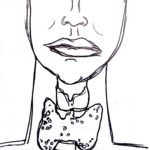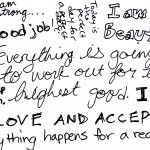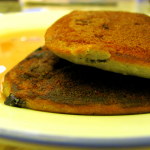One of my favourite courses, since I began my studies to become a naturopathic doctor, has been Asian Medicine. I am fascinated by the fact that this holistic form of medicine treated billions of people for the past 3000 years, how it remains a viable form of medicine and how, only now, when we put it to the test of our Western research methods, we find that it does work, but we’re still not sure how.
Traditional Chinese Medicine is a phenomenological science; its theories were developed by observing the body and nature and how they interact with one another. While the Western model of medicine is based on anatomy, what the body looks like, Chinese medicine bases its study of the body on functionality – what the body does. Contrary to what we like to believe in our Western medical paradigm, we do not live in isolation from the world around us. Chinese medicine seeks to understand health and pathology by observing the body’s interactions with the outside world, and how the entire organism is affected by imbalance and disease.
One of the most common treatment methods in Traditional Chinese Medicine, or TCM, is acupuncture, in which a series of fine needles are inserted into the body at strategic therapeutic points. These needles are thought to stimulate the flow of Qi, or energy, throughout the body, creating a balancing effect and stimulating the body’s ability to combat disease.
Numerous studies have been conducted on acupuncture and find that its effective for the treatment of various pathologies, including infertility, pain and digestive complaints. Another valid form of treatment is acupressure, or the exertion of pressure on the same therapeutic points that are commonly needled.
Acupressure is less invasive than acupuncture because there is no penetration of the skin. That is not to say, however, that it is completely safe. Please speak to a professional before attempting to treat yourself with acupressure. Also, if you’re pregnant, you should refrain from performing acupressure.
In the meantime, let’s look at 5 popular and effective acupressure points:
Large Intestine 4:
This very common headache-alleviating acupressure point is located in the meaty part of the hand between the thumb and index finger. Applying pressure to this point with the other hand is useful for relieving headache pain and calming the mind. This point is also great for releasing the “exterior” or, in English, reducing the symptoms of acute cold and flu: nasal congestion, runny noses, dizziness, sore throat and lethargy. Next time you have a headache, try exerting pressure on Large Intestine 4 before reaching for the Advil. However, bear in mind that this point is especially important to avoid if you think you might be pregnant.
Liver 3:
This point is located on the top of the foot between the big toe and the toe beside it. Application of pressure at this point is good for regulating emotions, relieving stress and calming the mind. This is my favourite point and feels painful when needled (which, according to TCM, means that I need it needled!). In TCM, the liver regulates the smooth flow of Qi and, when we’re stressed, our liver ability to circulate Qi can be compromised. Symptoms of “Liver Qi Stagnation” can occur during a stressful time, such as during exams, and often include headaches, menstrual cramps, insomnia, irritability, visual disturbances and other symptoms related to high-stress situations. Try applying acupressure to Liver 3 and breathing deeply, to relieve some stress and help your Liver function smoothly.
Spleen 6:
This point is located 4 finger widths up from the medial malleolus (the bony lump on the inside of the ankle). This point is a great point for treating pain, especially painful menstruation. Spleen 6 is useful for “anything gynecological”: PMS, painful periods, etc. In TCM the spleen is responsible for transforming food into energy, or Qi. Therefore, spleen 6 is also a useful point for digestive complaints such as diarrhea, bloating, constipation, etc. It is also excellent for increasing energy, decreasing fatigue and lethargy and improving mood and overall immunity.
Pericardium 6:
This popular point is located on the anterior forearm, between the two arm bones, slightly further up the arm from the wrist. In Traditional Chinese Medicine, the pericardium protects the heart but, in acupressure, Pericardium 6 is the key point for nausea. I’ve had to use it a number of times, on the subway train, to fight off impending nervous nausea before a big practical exam. Coupled with some deep breathing, it works like a charm.
Kidney 1:
This point is located on the bottom of the foot, one third of the way from the toes to the heel. The kidney regulates Essence, or the energy and vitality that we are born with. Increasing the kidney’s power can help restore essence, increase sexual energy, increase vitality and reduce the negative effects of aging such as poor memory, anxiety, lack of energy and insomnia. For those who have pelvic organ prolapse, avoid performing acupressure on kidney 1.
For any of these points try applying pressure for 30 seconds to a minute at least once a day. Pressure should be firm but never painful. Eliciting a dull, achy (but tolerable) sensation means that the point is being activated.
Acupressure is an excellent way to engage in self-care and reap the benefits of Asian Medicine from the comfort of your own home. To further experience the benefits of acupuncture, research a naturopathic doctor who practices acupuncture, or a community acupuncture clinic in your area. At community acupuncture clinics, acupuncture is provided in a group setting for lower prices, sometimes even offered on sliding scales or a pay-what-you-can basis.
*This article is not meant to diagnose or treat any medical condition. For an individualized assessment and treatment, please visit a licensed naturopathic doctor or acupuncturist.







Hi,
Lovely site and pictures but if you could please add some cautions to your acupressure piece as they’d be important proviso’s to have out there (I’m an acupuncturist in Ireland).
For large intestine 4 the caution that it’s not to be used while pregnant (concerns about causing miscarriage) and Kidney 1 is not ideal with any kind of organ prolapse (as it brings energy down strongly).
Good luck with your studies, best wishes,
Anne Hughes
Done! Thanks for the comment and the heads-up! I hope you visit more articles on my site!
Hi,
Ah thanks Tailia, sure it’s all a learning curve – great college you’re at btw, I went to check it out and considered going there when I lived in T.O many moons ago, (but decided to concentrate on the Acupuncture instead and spent 3 great years at The Acupuncture Institute in Little Italy.. Getting Canada wistful now 🙂
Anyways yes indeed will keep your site on the radar, I’ve come across some yummy recipes here since I last posted already, thanks !
Best wishes,
Anne
That’s crazy that you considered going to CCNM! I look forward to more of your comments!